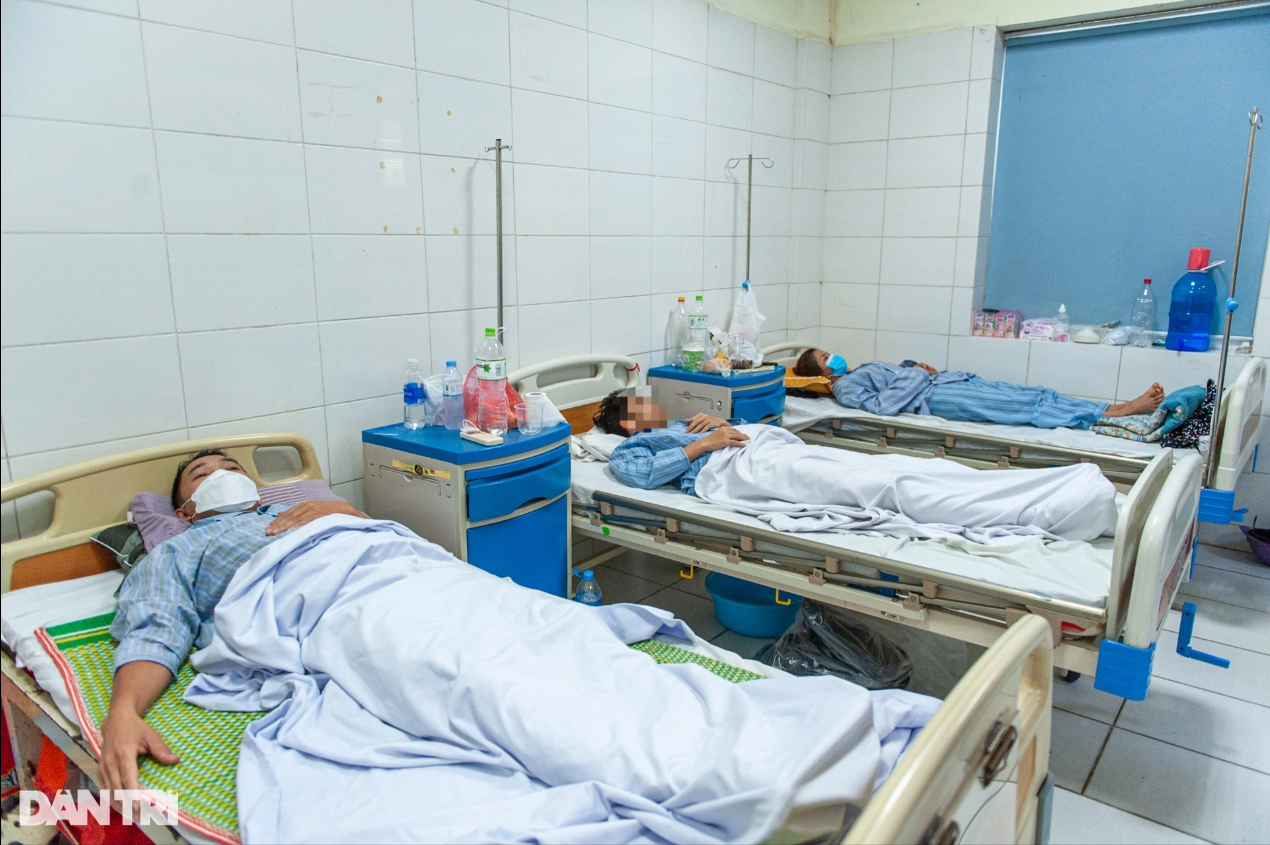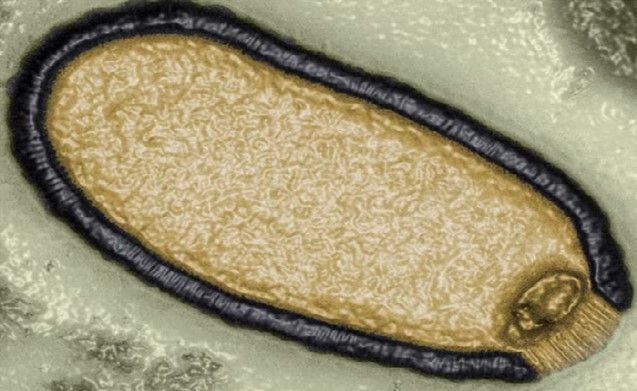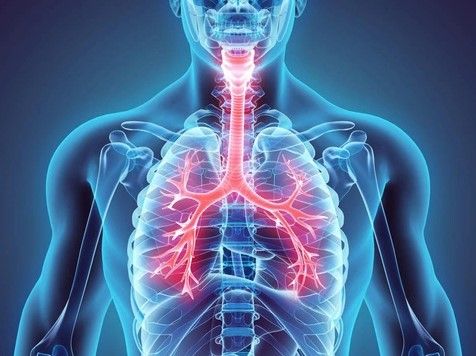Overview of the hottest epidemic in Hanoi: More than 500 cases/week, the rule is broken
- Hanoi is currently the focus of dengue fever in the North, with the number of cases accounting for 80-85%. The epidemic is expected to continue to escalate.

According to the report of Hanoi Department of Health, as of August 14, the whole city recorded 3,512 cases of dengue fever in 30/30 districts, towns; 440/579 communes, wards and townships (accounting for 76%).
Patients tend to increase rapidly in the last 4 weeks, with an average of 500-600 cases per week. The number of cases increased 5 times over the same period in 2022 (753 cases, 0 deaths).

Some districts recorded many patients such as: Thach That (537); Thanh Tri (342); Hoang Mai (282); Bac Tu Liem (266); Ha Dong (206)…
Through the results of inspection and supervision of the health sector, it was shown that the dengue epidemic was not treated thoroughly from the very beginning in the areas, leaving many nests of larva and the index of larvae after treatment. are all higher than the risk threshold, leading to spread and prolonged outbreaks.
The whole city has recorded 255 outbreaks, of which 114 outbreaks (accounting for 45%) are currently active.

In Thach That, 2 communes with complicated and prolonged outbreaks, recorded many patients are Phung Xa (Vinh Loc village and Bung village) and Huu Bang (Sen village and Ban village). These are craft villages and people have not yet paid attention to the prevention of dengue fever.
In Bac Tu Liem district, there are many schools, many hostels, and students from universities and colleges from neighboring provinces come to Hanoi to study, making epidemic prevention and control difficult.
According to the health sector, the dengue epidemic situation in the coming time will continue to be complicated because the number of cases per week has increased rapidly in the last 4 weeks and is about 1.5 years earlier than the same period in previous years. month.
Dengue fever breaks the rules, Hanoi is the "hottest" epidemic in the North
According to Mr. Khong Minh Tuan, Deputy Director of the Hanoi Center for Disease Control, the prevention and control of dengue fever every year has its own difficulties due to the changing strains of the disease.
Forecasting the epidemic situation, according to Mr. Tuan, in the years before 2010, dengue fever had a 5-year cycle, but since 2010, dengue fever no longer has a clear pattern.
"Hanoi is currently the focal point of dengue fever in the North, with the number of cases accounting for 80-85%," said Deputy Director of Hanoi CDC.

Sunny weather, erratic rain, plus El Nino phenomenon are some of the reasons why dengue fever becomes complicated. Without drastic solutions, dengue fever cases will increase further in the near future.
It is forecasted that the peak of the epidemic in 2023 may fall around September-October similar to the years when many patients were recorded like 2015 (15,412 cases); in 2019 (12,255 cases); 2022 (19,771 cases).
In addition, favorable weather conditions for the development of disease-transmitting mosquitoes, combined with the fact that there have been many outbreaks with many cases in the city, lead to a high risk of disease outbreaks.
In this regard, Dr. Nguyen Van Dung, Head of Entomology Department, National Institute of Malaria - Parasitology - Entomology, said that in the past, it was true that the dengue epidemic in our country evolved in a 4-5 cycle. year. However, this rule is now showing signs of being broken.
This can be clearly seen in the dengue epidemic of the previous year and the first 6 months of this year.
"The dengue epidemic is also showing signs of "reversing" compared to 2022. The number of cases in the South decreased compared to last year, while in the North, the epidemic increased sharply, Dr. Dung emphasized.

Thus, according to this expert, it can be seen that the current evolution of the dengue epidemic varies from region to region, from region to region, without following a cycle at all.
According to Dr. Dung, the North this year is hot and sunny, with a lot of rain, creating very good conditions for mosquitoes to grow.
This type of weather shortens the mosquito's life cycle. The time from egg to adult will be shortened, about 7-9 days. When the life cycle is shortened, the ability to reproduce will be more, increasing the density of contact with people. Just the source of the disease will break out.
Danger of life if subjective with dengue fever
Anh Phuong (character name has been changed), 41 years old, living in Phung Xa, Thach That, Hanoi was admitted to the hospital with severe headache.
After examining, the doctors determined that the patient had pleural effusion, abdominal effusion and plasma leakage due to dengue hemorrhagic fever. The area where Phuong's family lives is currently one of Hanoi's major dengue outbreaks.

He had detected symptoms of dengue fever 4 days before the time of admission, but Mr. Phuong subjectively bought medicine to treat at home. "I feel headache and tired, but I don't think I need to be hospitalized," the patient shared.
After a period of self-treatment, this man's condition showed no signs of improvement. On the contrary, he began to have nosebleeds and bleeding gums. Right in the morning, Mr. Phuong was taken to the National Hospital for Tropical Diseases by his family.
"I went to the hospital for tests and was asked by the doctors to stay at the hospital for immediate monitoring and treatment," Phuong said.
Every day, looking at 2 bags of blood being transfused into his body, Mr. Phuong was dumbfounded: "At first, I thought dengue fever was nothing to worry about. Now, I feel it's terrible."
According to statistics, the number of dengue fever patients currently being treated in hospitals is 776.
Hospitals with many patients are Hoai Duc General Hospital (100 patients), Hanoi Traditional Medicine General Hospital (79 patients), Thanh Nhan Hospital (68 patients).
BSCKII Tran Duy Hung, Head of Virology - Parasitology Department, Central Hospital for Tropical Diseases, warned that if people with dengue fever are subjective, the situation can become very alarming.
Serious complications can occur when patients are detected and treated late. They can affect many organs in the body and be life-threatening.

Some complications caused by dengue fever can include: pleural effusion, peritoneal effusion, circulatory failure due to plasma leakage. Not only that, low platelets will cause bleeding under the skin, bleeding in the mucous membranes. This causes the patient to lose blood and damage organs.
Besides, Dr. Hung also informed that dengue fever patients can be re-infected many times. Therefore, people who have ever had dengue fever must not be subjective.
"A patient can be infected twice in one epidemic season. Even they can have two different types," emphasized Dr. Hung.

This expert recommends that people need to go to reputable medical facilities for examination and support when there are signs of dengue fever. Common symptoms include: high fever, body aches, headache, double eye pain, fatigue and malaise.
Hanoi's total efforts to fight dengue fever
In the face of complicated epidemic developments, the Hanoi Department of Health inspected and supervised the collection, treatment, and assurance of hospital beds to meet treatment for dengue patients.
The total number of planned beds at hospitals serving the treatment of dengue patients is 712 beds and actual beds are 1,104 beds.

Speaking at the meeting on prevention and control of dengue fever and other human diseases in the city, Ms. Vu Thu Ha, Member, Vice Chairman of Hanoi People's Committee suggested localities total efforts to implement anti-epidemic plans.
Ms. Ha suggested districts, towns; Relevant departments, agencies and sectors review all tasks and implement plans in the prevention and control of epidemics in general and dengue fever in particular under the motto "4 on the spot", with groups of measures: basic:
- Focusing on widely propagating to each people and each household measures to prevent dengue fever.
- Implement total environmental sanitation in each residential area and each household in combination with propaganda, emphasizing that killing larva is the first and most important measure.
- Examine and closely monitor patients for early detection in order to localize, promptly and completely handle outbreaks and cases.


"If we do well in disease prevention and propaganda, we will reduce the number of cases and protect people's health," said Vice Chairman of Hanoi People's Committee.
Dr. Nguyen Van Dung said that for dengue fever, the role of the people is especially important.
Basically, the chemical spray method is only effective for 1-2 hours, then it diffuses into the environment and is no longer effective.
No larva, no dengue. Chemicals only kill the adults at that time. If the larva remains, within a few hours it will hatch and begin a new cycle of attacking humans.
To thoroughly prevent dengue fever, the most important thing is that people need to eliminate the habitat of the larvae: Clean the environment in and around the house, turn unnecessary tools upside down to avoid accidental standing water. a breeding ground for mosquitoes. When the mosquito density is reduced, the dengue epidemic will cool down.
The cleaning and arrangement of "risky" furniture cannot be replaced by any force. Therefore, if people do not join hands in prevention, we will never succeed, we will never be able to repel the epidemic in the provinces.
It should be noted that the Aedes mosquito - the vector of disease transmission - is the "luxury" mosquito, the "city" mosquito. They do not lay eggs in stagnant water, but only in clean water. Therefore, people's items that accidentally contain clean water such as rain water, air conditioners, refrigerators, etc. will be breeding grounds for mosquitoes.
Therefore, the denser the urban density, the more mosquitoes thrive. The more you live in the inner city, the higher the risk of dengue fever due to the high density of mosquitoes.









 Facebook
Facebook
 Tweet
Tweet
 Zalo
Zalo







 News
News

















 Sign in with Facebook
Sign in with Facebook
 Sign in with Google
Sign in with Google